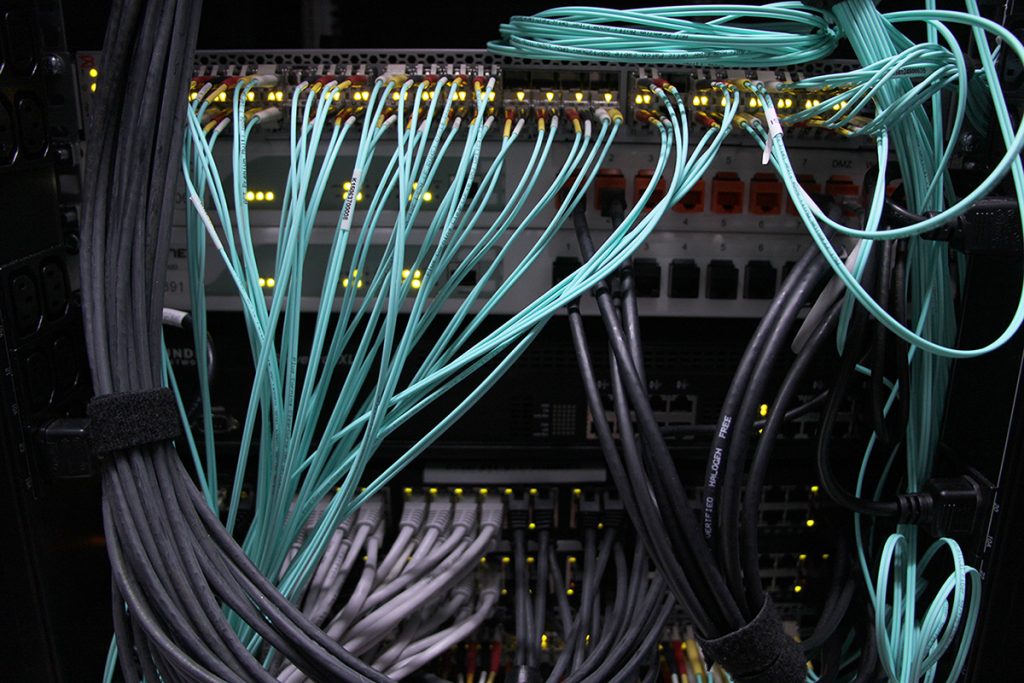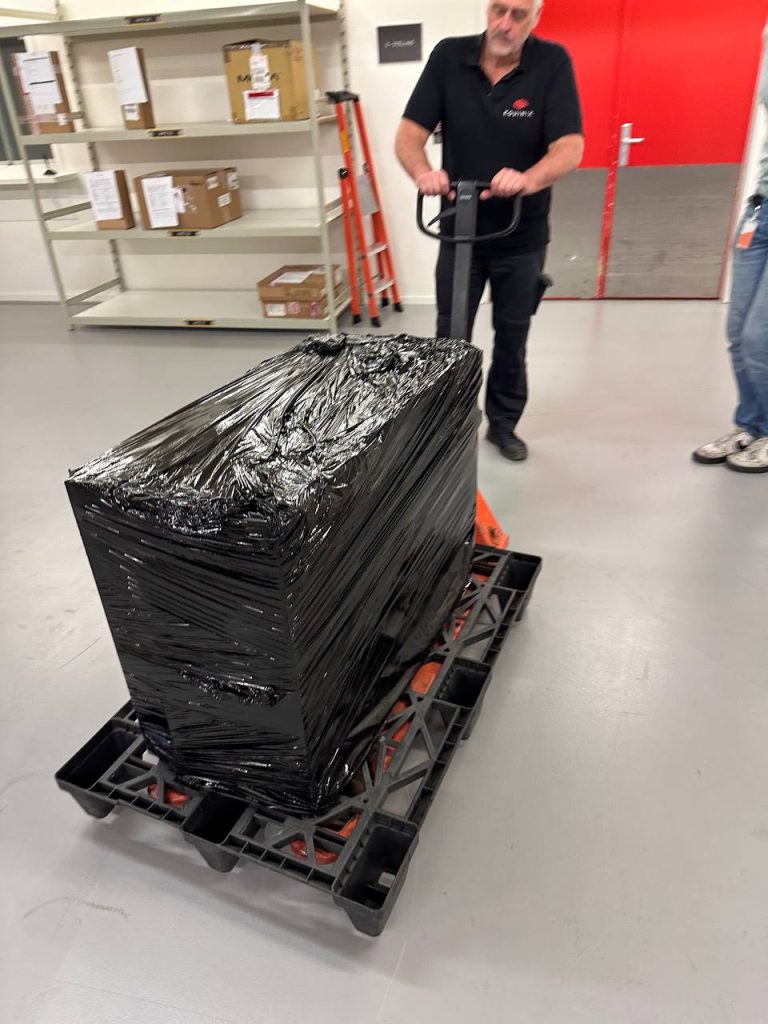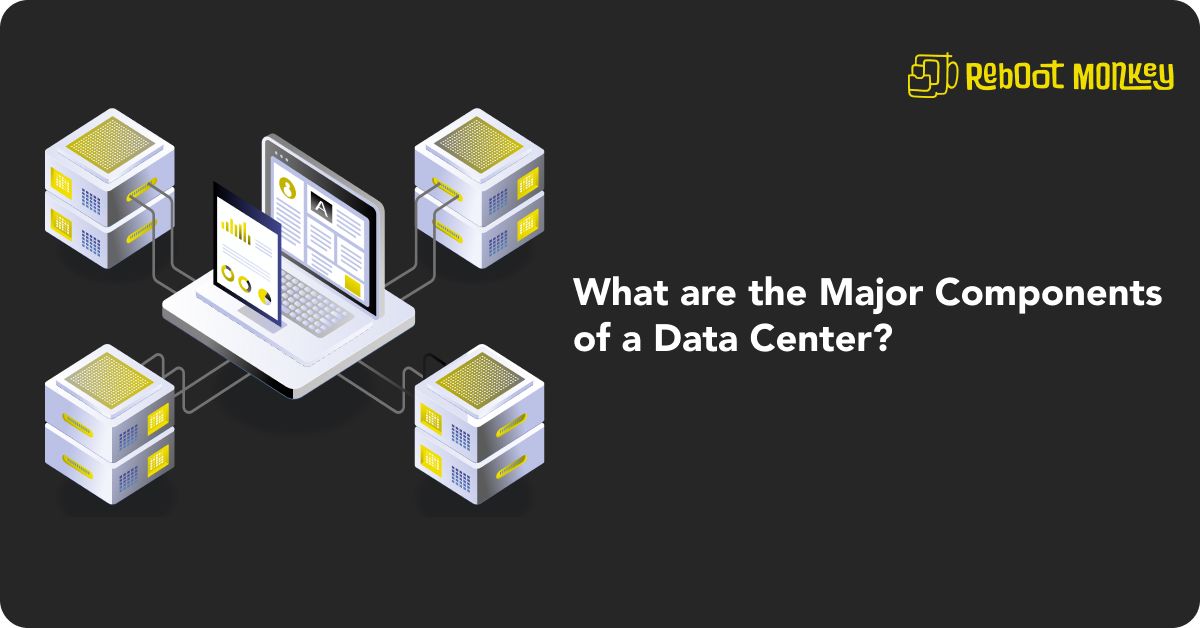Data Center | Reboot Monkey
You must know that “data center” is a facility that centralizes an organization’s IT operations and equipment, as well as where it stores, manages, and disseminates its data. Right?
Like every other facility, a data center has several critical components that work together to ensure the seamless operation of IT services.
You need to understand the major components of a data center. It offers insights into how servers, storage systems, networking equipment, power supply, cooling systems, physical security measures, monitoring tools, and fire suppression systems function.
This understanding enables you to contribute significantly to the efficiency, reliability, and security of your IT infrastructure.

Computing Hardware
Computing hardware, including servers, mainframes, and supercomputers, hosts applications and data while performing essential computations and processing tasks.
This hardware is the core of the data center, which enables it to manage and operate various digital services and applications.
You should know that computing hardware handles all data processing and application operations—which are critical for the smooth functioning of businesses and services relying on the data center.
Regular updates and patches to server software let the data center managers protect against vulnerabilities. Remember that virtualization can also help maximize hardware utilization, improve flexibility, and reduce overall costs.
Storage Systems
Storage systems, such as Storage Area Networks (SANs), Network Attached Storage (NAS), disk arrays, and tape systems, are responsible for storing data, files, and backups. They facilitate quick access and retrieval of data, which is important for efficient data management and operational continuity.
Data center storage systems ensure data availability, integrity, and security. All while playing a significant role in disaster recovery by providing reliable backup solutions.
You can enhance data protection, if you implement redundant storage systems. It is worth noting that regular audits of storage usage can also help optimize storage allocation and identify areas for improvement.
Networking Equipment
Networking equipment, including routers, switches, firewalls, and load balancers, manages data traffic within the data center and to/from external networks. These devices are essential for ensuring efficient, reliable, and secure communication between data center components and external clients.
The importance of networking equipment lies in its ability to handle data transfer securely and efficiently—which prevents bottlenecks and maintains high availability of services.
Regular updates of firmware and security protocols are necessary to protect against cyber threats. You should also employ network segmentation to further enhance both security and performance by isolating different parts of the network.
Rack and Stack Services: Harnessing the Full Potential of Rack and Stack Services

Data Center – Power and Cooling Systems
Power and cooling systems, includes uninterruptible power supplies (UPS), generators, and HVAC systems. These provide a continuous power supply and maintain optimal temperature and humidity levels in the data center.
You should know that power and cooling systems prevent hardware failures and data loss due to power outages and overheating. Just to ensure the continuous operation of data center services.
Top Hack: Master IT Infrastructure Management & Supercharge Your Business Growth
In fact, effective power and cooling solutions are essential for maintaining the reliability and longevity of the hardware.
You need to ensure that these systems operate efficiently. So, regular maintenance checks and environmental monitoring are recommended.
Data Center – Wrapping Up
Other data center components include monitoring tools and fire suppression systems.
It is important to know that you can leverage certain monitoring tools to gain real-time insights into the performance and health of data center components—which enables proactive maintenance and issue resolution.
On the other hand, fire suppression systems, such as smoke detectors and automated sprinklers, mitigate the risk of damage from fires. This safeguarded both equipment and data.
